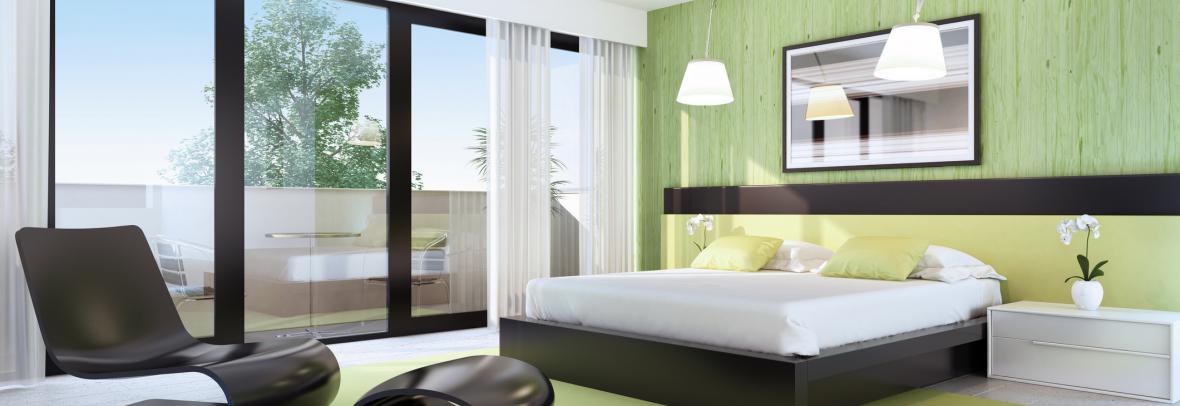
Staging Boosts Prices, Reduces Time on Market
About three in 10 agents reported a 1% to 10% increase in home value when homes were staged, NAR found. Nearly half of sellers experienced faster sales.
WASHINGTON — Nearly three out of 10 (29%) real estate agents reported that staging their sellers’ homes led to a 1% to 10% increase in the dollar value offered, and almost half (49%) of home sellers’ agents observed that home staging reduced the time homes spent on the market, according to the National Association of Realtors® 2025 Profile of Home Staging.
The report reveals the role home staging plays in real estate transactions, including the perspectives of home buyers’ and sellers’ agents, the influence of television shows and home buyer expectations.
Sixty percent of home buyers’ real estate agents cited that home staging had an effect on some home buyers but not always. Meanwhile, 26% of agents said home staging had an effect on most buyers’ view of the home, and only 12% indicated that home staging had no effect on home buyers’ views.
A majority (83%) of home buyers’ real estate agents said staging a home made it easier for a buyer to envision the property as their future home. Home buyers’ agents reported that staging would positively impact the home value if it was decorated to match buyers’ tastes (32%), and buyers were more willing to walk through a home they saw online (31%).
“The typical home seller resides in their home for 10 years before selling,” said Jessica Lautz, NAR deputy chief economist and vice president of research. “During that time, homeowners might overlook certain aspects that could be less appealing to potential buyers. By staging a home, agents who are Realtors® strategically highlight the best features, ensuring sellers receive the most-competitive offers.”
For home buyers, staging the living room was considered the most important (37%), followed closely by the primary bedroom (34%) and the kitchen (23%). In contrast, staging the guest bedroom (7%) was the least important.
Home buyers’ agents emphasized that including photos (73%), traditional physical staging (57%), videos (48%) and virtual tours (43%) in their listings were highly important to their clients.
Seventeen percent of home buyers’ real estate agents said that staging a home resulted in a 1% to 5% increase in the dollar value offered, compared to similar, un-staged homes on the market.
Twenty-one percent of home sellers’ real estate agents reported staging all their sellers’ homes prior to listing them for sale, while 10% only staged homes that were difficult to sell. More than half (51%) of home sellers’ agents did not stage homes before listing them for sale but recommended that sellers declutter or correct property faults.
The most commonly staged rooms by home sellers’ real estate agents were the living room (91%), primary bedroom (83%) and dining room (69%). In addition, 68% of home sellers’ agents staged the kitchen. The least commonly staged rooms were a guest bedroom and children’s bedroom (both 22%).
When it comes to staging compensation, 26% of home sellers’ agents said it depends on the situation. Another 23% reported that they personally offer to stage the home, and 17% said that the seller pays to stage the home before listing. The median cost for using a staging service was $1,500, compared to $500 when the home sellers’ agent handled the staging themselves.
The most common home improvement recommendations from real estate agents for home sellers were decluttering the home (91%), cleaning the entire home (88%) and improving curb appeal (77%).
Among home sellers’ real estate agents, incorporating photos (88%), videos (47%) and traditional physical staging (43%) in their listings were much more or more important to their clients. In contrast, 34% of home sellers’ agents considered virtual staging to be less important, while 24% felt it was equally important to their clients.
Forty-eight percent of respondents reported that home buyers expected homes to look like they were staged on TV shows, and 58% said that buyers were disappointed by how homes looked compared to those portrayed on TV shows.
Among real estate agents, 21% said TV shows depicting the homebuying process impacted their business. In addition, 77% of respondents indicated that TV shows set unrealistic or increased expectations, 60% said they set higher expectations of how homes should look, and 14% said they result in more educated home buyers and sellers.
Methodology
In February 2025, NAR invited a random sample of 49,806 active Realtors® to complete an online survey. NAR received 1,266 usable responses for an overall response rate of 2.5%. At the 95% confidence level, the margin of error is +/- 2.75%. The primary measure of central tendency used throughout this report is the median – the middle point in the distribution of responses to a particular question or, equivalently, the point at which half of the responses are above and below a particular value. Due to rounding and omissions for space, percentage distributions may not add up to 100%.
© 2025 National Association of Realtors® (NAR)
